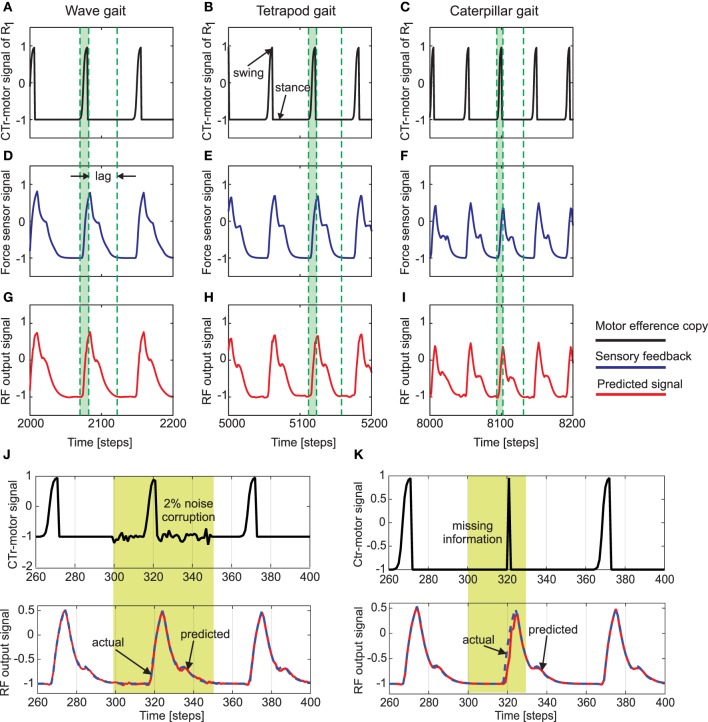Figure 5.
(A–C) The CTr-joint motor signal of the right front leg (R1) for wave, tetrapod, and caterpillar gaits, respectively. This motor signal provides the efference copy or the input to the reservoir forward models. (D–F) The actual foot contact signal (force sensor signal under normal walking conditions) used as the target signal of the reservoir models. (G–I) The predicted foot contact signal or the final learned output of the forward model for each walking gait (RF output signal). The green shaded region indicates the time interval between swing and stance phase for the CTr motor signal at the three walking gaits. As observed the actual foot contact signal is considerably lagged in time compared to the motor signal. Effectively, this lag decreases with an increase in the gait frequency. The single RF adaptively accounts for these different delay times in order to accurately predict the expected foot contact signal. (J) above—CTr-joint motor signal demonstrated for a single leg, with 2% Gaussian noise injected between 300 and 350 time steps (yellow shaded region), below—Despite the noise corruption of the motor signal, the reservoir forward model is able to generate the correct predicted FC signal (blue dotted—target FC signal, red solid—predicted signal). (K) above—The CTr-joint motor signal corrupted with missing information between 280 and 320 time steps. As a result, the motor signal shows a narrow spike between 310 and 330 time steps (yellow shaded region), below—Reservoir forward model predicted signal (red) as compared to the desired FC signal (dotted blue). Although the CTr motor signal was transiently missing, the reservoir is able to generate the desired FC signal considerably well, while at the same time maintaining the correct temporal sequence of the signals.

